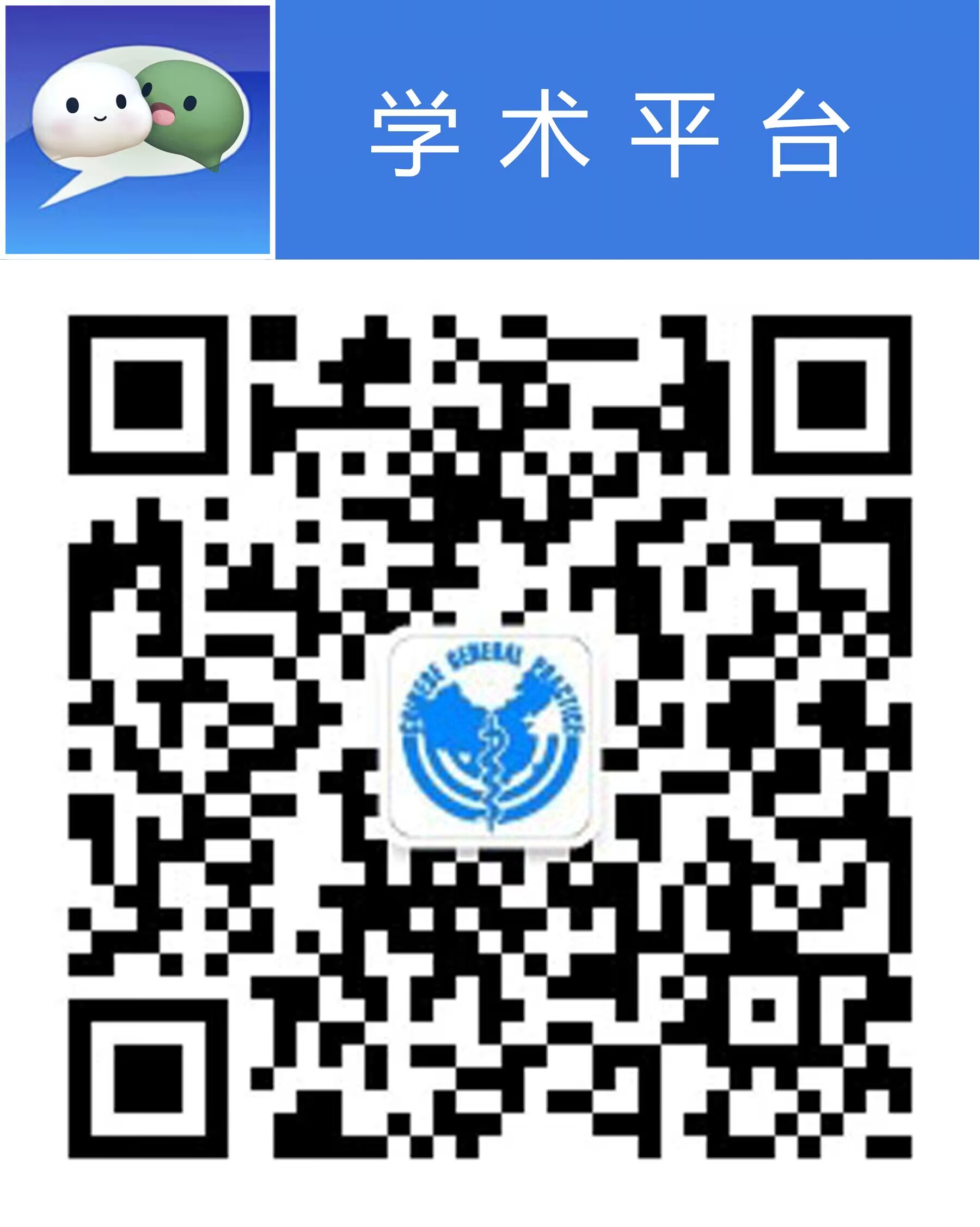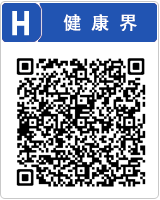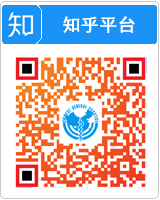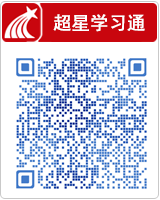中国全科医学 ›› 2024, Vol. 27 ›› Issue (35): 4376-4387.DOI: 10.12114/j.issn.1007-9572.2024.0020
所属专题: 睡眠研究最新文章合辑; 睡眠问题专题研究; 运动相关研究最新文章合辑
收稿日期:2024-01-10
修回日期:2024-03-28
出版日期:2024-12-15
发布日期:2024-09-13
通讯作者:
曹春梅
郭佳选定研究主题,制定文献检索策略,负责数据处理与分析,图表制作,论文的撰写;曹春梅负责研究开展,把控进程,论文审核与修改,负责最终版本修订;刘国纯负责论文设计与初步修改,提出合理建议;郑满、朱芮含完成背靠背的文献检索、筛选与资料提取;龙伟负责当背靠背研究员数据检索与提取存在不一致情况时,介入研究。
基金资助:
GUO Jia, CAO Chunmei*( ), LIU Guochun, ZHENG Man, ZHU Ruihan, LONG Wei
), LIU Guochun, ZHENG Man, ZHU Ruihan, LONG Wei
Received:2024-01-10
Revised:2024-03-28
Published:2024-12-15
Online:2024-09-13
Contact:
CAO Chunmei
摘要: 背景 失眠问题不仅会降低人们的生活质量和工作效率,而且还与多种疾病之间有密切的关系,合理的运动方案可以在一定程度上改善失眠质量,但目前缺乏不同运动方式对其睡眠结局影响效果的比较研究。目的 比较不同运动方式对失眠患者睡眠影响的效果,为该人群制定改善睡眠的运动处方提供借鉴。方法 通过PubMed、Web of Science、EBSCO、Scopus、中国知网、万方数据知识服务平台检索不同运动方式对失眠患者睡眠影响的随机对照试验(RCT),检索时间为建库至2023年12月。使用Jadad量表对文献质量进行评价,使用Stata 17.0软件的频率学框架的随机效应模型进行网状Meta统计,使用偏倚漏斗图观察发表偏倚。结果 共纳入36篇文献,包含2 706例受试者,涉及5类干预措施:有氧运动(AE)、抗阻运动(RT)、身心运动(ME)、运动时间延长(PTE)、有氧与抗阻结合的运动(AE+RT)。网状Meta分析结果显示,AE和空白对照(CT)组(SMD=2.20,95%CI=0.35~4.05)对主观评价工具总评分的影响比较,差异有统计学意义(P<0.05);累积排序概率图下面积(SUCRA)排序结果为AE(82.2%)>ME(71.1%)>AE+RT(54.2%)>RT(38.9%)>CT(29.2%)>PTE(24.4%)。PTE与AE+RT(SMD=-14.66,95%CI=-28.60~-0.72),AE+RT与RT(SMD=21.32,95%CI=6.24~36.40)以及AE+RT与AE(SMD=11.19,95%CI=1.56~20.81)对睡眠潜伏期的影响比较,差异有统计学意义(P<0.05);SUCRA概率排序结果显示,AE+RT(96.7%)>CT(77.1%)>ME(49.5%)>AE(42.6%)>PTE(27.9%)>RT(6.1%)。AE与CT(SMD=4.59,95%CI=1.59~7.58)对睡眠效率的影响比较,差异有统计学意义(P<0.05);SUCRA概率排序结果显示AE(83.1%)>AE+RT(59.9%)>RT(50.7%)>ME(46.9%)>PTE(35.5%)>CT(23.9%)。PTE与RT(SMD=23.39,95%CI=14.67~32.02),PTE与AE(SMD=14.86,95%CI=4.64~36.40),PTE与CT(SMD=12.11,95%CI=7.62~16.59),RT与ME(SMD=-27.61,95%CI=-40.49~-14.73),RT与CT(SMD=-11.28,95%CI=-20.86~-1.70),ME与AE(SMD=19.08,95%CI=5.18~32.98),ME与CT(SMD=16.33,95%CI=7.26~25.40)对睡眠觉醒时间的影响比较,差异有统计学意义(P<0.05);SUCRA概率排序结果显示,RT(94.7%)>CT(80.2%)>AE(41.8%)>ME(31.5%)>PTE(1.7%)。RT与AE(SMD=-20.84,95%CI=-38.46~-3.23),AE与CT(SMD=12.02,95%CI=2.96~21.08)对总睡眠时长的影响比较,差异有统计学意义(P<0.05);SUCRA概率排序结果显示,AE(87.2%)>AE+CT(71.6%)>PTE(53.8%)>ME(40.6%)>CT(35.9%)>RT(10.8%)。各项干预措施对睡眠质量的影响比较,差异均无统计学意义(P>0.05);SUCRA概率排序结果显示,AE(84.2%)>AE+CT(75.5%)>ME(24.9%)>CT(15.4%)。对主观评价工具总评分、睡眠潜伏期、睡眠效率、睡眠觉醒时间、总睡眠时长、睡眠质量进行发表偏倚分析,发现6个结局指标均存在一定的不对称性,提示存在一定的发表偏倚风险。结论 鉴于AE对多个睡眠指标有较好的改善作用,推荐失眠患者进行3次/周、30 min/次的中等强度AE,如慢跑、快走等,此外,也可以选择4~5次/周中等强度的RT或AE+RT,在进行上述运动时需要额外注意时间段选择,尽量避免睡前3 h内进行运动。
中图分类号:
| 第一作者 | 发表年份(年) | 国家 | 样本量(例) | 性别(男/女) | 年龄(岁) | 干预措施 | 负荷 | 频率(次/周) | 时长(min/次) | 干预周数(周) | 睡眠评价方案 | 睡眠结局指标 |
|---|---|---|---|---|---|---|---|---|---|---|---|---|
| 王继辉[ | 2015 | 中国 | T:26 | 12/15 | 33.25±7.38 | AE | 中等强度 | 3±0.74 | 105± 66.67 | 4 | PSQI、睡眠日志 | PSQI、SL、SE、WASO |
| C:25 | 10/15 | 34.24±9.24 | CT | |||||||||
| 马欣荣[ | 2020 | 中国 | T:36 | 11/25 | 52.31±11.24 | ME | 2 | 120 | 4 | PSQI | PSQI、SL、TST、SE、WASO | |
| C:30 | 10/20 | 49.73±13.22 | CT | |||||||||
| 尹辉[ | 2011 | 中国 | T:30 | AE | 中等强度 | 3 | 79 | 4 | PSQI | PSQI、SL、TST、SE、SQ | ||
| C:30 | CT | |||||||||||
| 赵春玲[ | 2022 | 中国 | T:43 | 25/18 | 52.17±8.58 | AE | 中等强度 | 7 | 50 | 8 | PSQI、PSG | PSQI、SL、TST、SE、WASO、SOL |
| C:45 | 24/21 | 51.69±7.95 | CT | |||||||||
| 钟代曲[ | 2019 | 中国 | T:100 | 43/57 | 41.36±8.34 | ME | 3 | 60 | 12 | PSG | SL、TST、SE、WASO、SOL | |
| C:100 | 45/55 | 42.29±7.46 | CT | |||||||||
| 李敬阳[ | 2004 | 中国 | T:25 | ME | 7 | 20 | 6 | PSQI | PSQI | |||
| C:25 | CT | |||||||||||
| 云鑫[ | 2016 | 中国 | T:35 | 13/22 | 65.7 | AE | 中等强度 | 7 | 30-60 | 8 | SPIEGEL | SPIEGEL |
| C:35 | 15/20 | CT | ||||||||||
| 赵非一[ | 2016 | 中国 | T:14 | 5/8 | 21.14±3.88 | ME | 7 | 45 | 4 | PSQI | PSQI | |
| C:14 | 7/7 | 21.08±4.00 | CT | |||||||||
| 张剑[ | 2014 | 中国 | T:30 | 14/16 | 64.7±5.14 | ME | 7 | 90 | 12 | SPIEGEL | SPIEGEL | |
| C:30 | 13/17 | 64.3±5.52 | CT | |||||||||
| FAN[ | 2020 | 中国 | T:67 | 12/55 | 70.3±5.7 | ME | 5 | 45 | 12 | PSQI | PSQI | |
| C:72 | 22/50 | 71.8±6.7 | CT | |||||||||
| DUMAN[ | 2018 | 中国 | T:81 | 52.98±4.33 | ME | 1 | 60 | 8 | WHIIRS | WHIIRS | ||
| C:88 | 53.68±4.63 | CT | ||||||||||
| KING[ | 1997 | 英国 | T:20 | 8/12 | 62.36±7.05 | AE | 中等强度 | 4 | 60 | 16 | PSQI | PSQI、SL、TST、SQ |
| C:23 | 6/17 | 60.57±7.01 | CT | |||||||||
| WIKLUND[ | 2020 | 瑞典 | T:65 | 54.21±10.15 | AE+RT | 中等强度 | 2 | 60 | 8 | ISI | ISI | |
| C:60 | CT | |||||||||||
| HARTESCU[ | 2015 | 英国 | T:20 | 15/5 | 59.5±10.59 | AE | 中等强度 | 5 | 30 | 24 | ISI | ISI |
| C:21 | 15/6 | 60.1±8.51 | CT | |||||||||
| NG[ | 2022 | 中国 | T:75 | 20/75 | 55.97±10.76 | ME | 3 | 30 | 8 | PSQI | PSQI | |
| C:73 | 20/73 | 54.59±10.23 | CT | |||||||||
| NIU[ | 2021 | 中国 | T:30 | 0/60 | 26.07±4.03 | AE | 中等强度 | 3 | 60 | 8 | 体动计 | TST、SL、WASO、SE |
| C:30 | 26.03±4.36 | CT | ||||||||||
| BRANDÃO[ | 2018 | 巴西 | T:61 | 5/56 | 69.8±7.4 | AE+RT | 中高强度 | 3 | 40 | 12 | PSQI | SL、SE、SQ |
| C:64 | 10/54 | 69.9±6.7 | CT | |||||||||
| WANG[ | 2015 | 中国 | T:35 | 38.71±9.93 | AE | 中等强度 | 5 | 30 | 4 | ISI | ISI、SL、TST、SE、WASO | |
| C:36 | 41.77±7.65 | CT | ||||||||||
| LOEPPENTHIN[ | 2022 | 丹麦 | T:17 | 4/13 | 57.8±9.8 | AE | 中高强度 | 3 | 30 | 6 | PSG | SE、SL、TST、WASO |
| C:21 | 1/20 | 54.8±9.6 | CT | |||||||||
| MURAWSKI[ | 2019 | 澳大利亚 | T:80 | 14/66 | 41.1±9.84 | PTE | 中高强度 | 每周中等强度活动时间:428.4(523.41)min | 12 | PSQI | PSQI | |
| C:80 | 18/62 | 41.99±10.07 | CT | |||||||||
| YEUNG[ | 2018 | 中国 | T:18 | 3/34 | 49.8±13.5 | PTE | 中高强度 | 7 | 34.3 | 8 | ISI、睡眠日志 | ISI、SL、TST、WASO |
| C:19 | 2/16 | 50.0±14.1 | CT | |||||||||
| TSENG[ | 2020 | 中国 | T:20 | 5/15 | 61.1±6.8 | AE | 中等强度 | 1 | 50 | 12 | PSQI | PSQI、TST、SL、SE、SQ |
| C:20 | 2/18 | 62.2±7.4 | CT | |||||||||
| CHIN[ | 2022 | 中国 | T:9 | 0/9 | 61.7±2.7 | AE | 代谢6.5 MET | 3 | 25 | 12 | 体动计 | SE、WASO、SL、TST |
| C:9 | 1/8 | 63.8±6.0 | ME | |||||||||
| CHEN[ | 2016 | 中国 | T:33 | 8/25 | 65.2±0.9 | AE | 中等强度 | 2 | 60 | 8 | 体动计 | SL、SE、TST、WASO |
| C:34 | 6/28 | 66.2±1.2 | CT | |||||||||
| TAN[ | 2016 | 芬兰 | T:24 | 24/0 | 51.2±10.89 | AE | 中等强度 | 1~5 | 30~60 | 24 | 睡眠监测器 | TST、SL、WASO、SE |
| C:21 | 21/0 | 66.2±1.2 | CT | |||||||||
| CAI[ | 2014 | 中国 | T:10 | 0/10 | 57.60±0.69 | AE | 中高强度 | 3 | 80-90 | 10 | PSQI | PSQI |
| C:9 | 0/9 | 59.33±1.13 | CT | |||||||||
| BARON[ | 2023 | 法国 | T:12 | 0/12 | 46.4±5.67 | AE | 中高强度 | 3 | 75 | 12 | ISI、体动计 | ISI、TST、SL、WASO、SE |
| C:12 | 0/12 | 44.8±7.82 | CT | |||||||||
| LI[ | 2022 | 美国 | T:11 | 3/8 | 72.2±6.9 | AE+RT | 中等强度 | 2~3 | 80~120 | 24 | PSQI、体动计 | PSQI、TST、SL、WASO、SE |
| C:10 | 3/7 | 74.6±6.2 | CT | |||||||||
| REID[ | 2010 | 美国 | T:10 | 0/10 | 62±4.5 | AE | 中等强度 | 4 | 40 | 16 | PSQI | PSQI、TST、SL、SE、SQ |
| C:7 | 1/6 | 63.5±4.3 | CT | |||||||||
| ABD EL-KADER[ | 2020 | 沙特阿拉伯 | T:35 | 14/26 | 51.27±5.32 | AE | 中等强度 | 3 | 30 | 24 | PSG | TST、SL、WASO、SE |
| C:35 | 12/28 | 52.64±4.81 | CT | |||||||||
| KARANDIKAR-AGASHE[ | 2020 | 印度 | T1:30 | 0/60 | 50.70±2.95 | RT | 中等强度 | 3 | 25 | 4 | PSQI | PSQI |
| T2:30 | 51.63±3.469 | AE | 中等强度 | 3 | 25 | 4 | ||||||
| 杨栋[ | 2020 | 中国 | T1:17 | 43.6±12.5 | AE | 中等强度 | 3~4 | 60 | 16 | PSG | TST、SE、SL | |
| T2:19 | 43.6±12.5 | AE+RT | 中等强度 | 3~4 | 60 | |||||||
| AL-JIFFRI[ | 2021 | 沙特阿拉伯 | T1:30 | 18/12 | 43.64±3.97 | AE | 中高强度 | 3 | 40 | 24 | PSG | SL、SE、WASO、TST |
| T2:30 | 20/10 | 41.51±4.26 | RT | 中高强度 | 40 | |||||||
| EADIE[ | 2013 | 英国 | T1:13 | 8/12 | 46.4±13.8 | AE | 中等强度 | 5 | 30 | 8 | PSQI | PSQI |
| T2:16 | 8/12 | 41.3±11.9 | PTE | |||||||||
| C1:13 | 7/13 | 47.1±14.3 | CT | |||||||||
| SIU[ | 2021 | 中国 | T1:105 | 84/21 | 66.5±6.4 | ME | 3 | 60 | 12 | PSQI、体动计 | PSQI、SE、WASO、TST | |
| T2:105 | 84/21 | 67.3±5.7 | PTE | 中等强度 | ||||||||
| C1:110 | 88/22 | 68±8.2 | CT | |||||||||
| D'AUREA[ | 2019 | 巴西 | T1:10 | 44.5±2.2 | RT | 中等强度 | 7 | 1 | 16 | PSQI | PSQI、SE、SL、TST | |
| T2:10 | 45.5±2.5 | ME | ||||||||||
| C:8 | 40.3±62.7 | CT |
表1 纳入研究基本信息
Table 1 The characteristics of the included literatures
| 第一作者 | 发表年份(年) | 国家 | 样本量(例) | 性别(男/女) | 年龄(岁) | 干预措施 | 负荷 | 频率(次/周) | 时长(min/次) | 干预周数(周) | 睡眠评价方案 | 睡眠结局指标 |
|---|---|---|---|---|---|---|---|---|---|---|---|---|
| 王继辉[ | 2015 | 中国 | T:26 | 12/15 | 33.25±7.38 | AE | 中等强度 | 3±0.74 | 105± 66.67 | 4 | PSQI、睡眠日志 | PSQI、SL、SE、WASO |
| C:25 | 10/15 | 34.24±9.24 | CT | |||||||||
| 马欣荣[ | 2020 | 中国 | T:36 | 11/25 | 52.31±11.24 | ME | 2 | 120 | 4 | PSQI | PSQI、SL、TST、SE、WASO | |
| C:30 | 10/20 | 49.73±13.22 | CT | |||||||||
| 尹辉[ | 2011 | 中国 | T:30 | AE | 中等强度 | 3 | 79 | 4 | PSQI | PSQI、SL、TST、SE、SQ | ||
| C:30 | CT | |||||||||||
| 赵春玲[ | 2022 | 中国 | T:43 | 25/18 | 52.17±8.58 | AE | 中等强度 | 7 | 50 | 8 | PSQI、PSG | PSQI、SL、TST、SE、WASO、SOL |
| C:45 | 24/21 | 51.69±7.95 | CT | |||||||||
| 钟代曲[ | 2019 | 中国 | T:100 | 43/57 | 41.36±8.34 | ME | 3 | 60 | 12 | PSG | SL、TST、SE、WASO、SOL | |
| C:100 | 45/55 | 42.29±7.46 | CT | |||||||||
| 李敬阳[ | 2004 | 中国 | T:25 | ME | 7 | 20 | 6 | PSQI | PSQI | |||
| C:25 | CT | |||||||||||
| 云鑫[ | 2016 | 中国 | T:35 | 13/22 | 65.7 | AE | 中等强度 | 7 | 30-60 | 8 | SPIEGEL | SPIEGEL |
| C:35 | 15/20 | CT | ||||||||||
| 赵非一[ | 2016 | 中国 | T:14 | 5/8 | 21.14±3.88 | ME | 7 | 45 | 4 | PSQI | PSQI | |
| C:14 | 7/7 | 21.08±4.00 | CT | |||||||||
| 张剑[ | 2014 | 中国 | T:30 | 14/16 | 64.7±5.14 | ME | 7 | 90 | 12 | SPIEGEL | SPIEGEL | |
| C:30 | 13/17 | 64.3±5.52 | CT | |||||||||
| FAN[ | 2020 | 中国 | T:67 | 12/55 | 70.3±5.7 | ME | 5 | 45 | 12 | PSQI | PSQI | |
| C:72 | 22/50 | 71.8±6.7 | CT | |||||||||
| DUMAN[ | 2018 | 中国 | T:81 | 52.98±4.33 | ME | 1 | 60 | 8 | WHIIRS | WHIIRS | ||
| C:88 | 53.68±4.63 | CT | ||||||||||
| KING[ | 1997 | 英国 | T:20 | 8/12 | 62.36±7.05 | AE | 中等强度 | 4 | 60 | 16 | PSQI | PSQI、SL、TST、SQ |
| C:23 | 6/17 | 60.57±7.01 | CT | |||||||||
| WIKLUND[ | 2020 | 瑞典 | T:65 | 54.21±10.15 | AE+RT | 中等强度 | 2 | 60 | 8 | ISI | ISI | |
| C:60 | CT | |||||||||||
| HARTESCU[ | 2015 | 英国 | T:20 | 15/5 | 59.5±10.59 | AE | 中等强度 | 5 | 30 | 24 | ISI | ISI |
| C:21 | 15/6 | 60.1±8.51 | CT | |||||||||
| NG[ | 2022 | 中国 | T:75 | 20/75 | 55.97±10.76 | ME | 3 | 30 | 8 | PSQI | PSQI | |
| C:73 | 20/73 | 54.59±10.23 | CT | |||||||||
| NIU[ | 2021 | 中国 | T:30 | 0/60 | 26.07±4.03 | AE | 中等强度 | 3 | 60 | 8 | 体动计 | TST、SL、WASO、SE |
| C:30 | 26.03±4.36 | CT | ||||||||||
| BRANDÃO[ | 2018 | 巴西 | T:61 | 5/56 | 69.8±7.4 | AE+RT | 中高强度 | 3 | 40 | 12 | PSQI | SL、SE、SQ |
| C:64 | 10/54 | 69.9±6.7 | CT | |||||||||
| WANG[ | 2015 | 中国 | T:35 | 38.71±9.93 | AE | 中等强度 | 5 | 30 | 4 | ISI | ISI、SL、TST、SE、WASO | |
| C:36 | 41.77±7.65 | CT | ||||||||||
| LOEPPENTHIN[ | 2022 | 丹麦 | T:17 | 4/13 | 57.8±9.8 | AE | 中高强度 | 3 | 30 | 6 | PSG | SE、SL、TST、WASO |
| C:21 | 1/20 | 54.8±9.6 | CT | |||||||||
| MURAWSKI[ | 2019 | 澳大利亚 | T:80 | 14/66 | 41.1±9.84 | PTE | 中高强度 | 每周中等强度活动时间:428.4(523.41)min | 12 | PSQI | PSQI | |
| C:80 | 18/62 | 41.99±10.07 | CT | |||||||||
| YEUNG[ | 2018 | 中国 | T:18 | 3/34 | 49.8±13.5 | PTE | 中高强度 | 7 | 34.3 | 8 | ISI、睡眠日志 | ISI、SL、TST、WASO |
| C:19 | 2/16 | 50.0±14.1 | CT | |||||||||
| TSENG[ | 2020 | 中国 | T:20 | 5/15 | 61.1±6.8 | AE | 中等强度 | 1 | 50 | 12 | PSQI | PSQI、TST、SL、SE、SQ |
| C:20 | 2/18 | 62.2±7.4 | CT | |||||||||
| CHIN[ | 2022 | 中国 | T:9 | 0/9 | 61.7±2.7 | AE | 代谢6.5 MET | 3 | 25 | 12 | 体动计 | SE、WASO、SL、TST |
| C:9 | 1/8 | 63.8±6.0 | ME | |||||||||
| CHEN[ | 2016 | 中国 | T:33 | 8/25 | 65.2±0.9 | AE | 中等强度 | 2 | 60 | 8 | 体动计 | SL、SE、TST、WASO |
| C:34 | 6/28 | 66.2±1.2 | CT | |||||||||
| TAN[ | 2016 | 芬兰 | T:24 | 24/0 | 51.2±10.89 | AE | 中等强度 | 1~5 | 30~60 | 24 | 睡眠监测器 | TST、SL、WASO、SE |
| C:21 | 21/0 | 66.2±1.2 | CT | |||||||||
| CAI[ | 2014 | 中国 | T:10 | 0/10 | 57.60±0.69 | AE | 中高强度 | 3 | 80-90 | 10 | PSQI | PSQI |
| C:9 | 0/9 | 59.33±1.13 | CT | |||||||||
| BARON[ | 2023 | 法国 | T:12 | 0/12 | 46.4±5.67 | AE | 中高强度 | 3 | 75 | 12 | ISI、体动计 | ISI、TST、SL、WASO、SE |
| C:12 | 0/12 | 44.8±7.82 | CT | |||||||||
| LI[ | 2022 | 美国 | T:11 | 3/8 | 72.2±6.9 | AE+RT | 中等强度 | 2~3 | 80~120 | 24 | PSQI、体动计 | PSQI、TST、SL、WASO、SE |
| C:10 | 3/7 | 74.6±6.2 | CT | |||||||||
| REID[ | 2010 | 美国 | T:10 | 0/10 | 62±4.5 | AE | 中等强度 | 4 | 40 | 16 | PSQI | PSQI、TST、SL、SE、SQ |
| C:7 | 1/6 | 63.5±4.3 | CT | |||||||||
| ABD EL-KADER[ | 2020 | 沙特阿拉伯 | T:35 | 14/26 | 51.27±5.32 | AE | 中等强度 | 3 | 30 | 24 | PSG | TST、SL、WASO、SE |
| C:35 | 12/28 | 52.64±4.81 | CT | |||||||||
| KARANDIKAR-AGASHE[ | 2020 | 印度 | T1:30 | 0/60 | 50.70±2.95 | RT | 中等强度 | 3 | 25 | 4 | PSQI | PSQI |
| T2:30 | 51.63±3.469 | AE | 中等强度 | 3 | 25 | 4 | ||||||
| 杨栋[ | 2020 | 中国 | T1:17 | 43.6±12.5 | AE | 中等强度 | 3~4 | 60 | 16 | PSG | TST、SE、SL | |
| T2:19 | 43.6±12.5 | AE+RT | 中等强度 | 3~4 | 60 | |||||||
| AL-JIFFRI[ | 2021 | 沙特阿拉伯 | T1:30 | 18/12 | 43.64±3.97 | AE | 中高强度 | 3 | 40 | 24 | PSG | SL、SE、WASO、TST |
| T2:30 | 20/10 | 41.51±4.26 | RT | 中高强度 | 40 | |||||||
| EADIE[ | 2013 | 英国 | T1:13 | 8/12 | 46.4±13.8 | AE | 中等强度 | 5 | 30 | 8 | PSQI | PSQI |
| T2:16 | 8/12 | 41.3±11.9 | PTE | |||||||||
| C1:13 | 7/13 | 47.1±14.3 | CT | |||||||||
| SIU[ | 2021 | 中国 | T1:105 | 84/21 | 66.5±6.4 | ME | 3 | 60 | 12 | PSQI、体动计 | PSQI、SE、WASO、TST | |
| T2:105 | 84/21 | 67.3±5.7 | PTE | 中等强度 | ||||||||
| C1:110 | 88/22 | 68±8.2 | CT | |||||||||
| D'AUREA[ | 2019 | 巴西 | T1:10 | 44.5±2.2 | RT | 中等强度 | 7 | 1 | 16 | PSQI | PSQI、SE、SL、TST | |
| T2:10 | 45.5±2.5 | ME | ||||||||||
| C:8 | 40.3±62.7 | CT |
| 第一作者 | 随机方法 | 分配隐藏 | 盲法 | 失访 | Jadad评分(分) | 第一作者 | 随机方法 | 分配隐藏 | 盲法 | 失访 | Jadad评分(分) |
|---|---|---|---|---|---|---|---|---|---|---|---|
| 王继辉[ | 提及 | 不清楚 | 单盲 | 8人退出,原因说明 | 4 | LOEPPENTHIN[ | 随机 | 不清楚 | 单盲 | 无 | 3 |
| 马欣荣[ | 提及 | 不清楚 | 无 | 无 | 3 | MURAWSKI[ | 随机 | 密闭信封 | 无 | 35人退出,说明原因 | 5 |
| 尹辉[ | 提及 | 不清楚 | 无 | 无 | 3 | YEUNG[ | 随机 | 不清楚 | 无 | 5人退出,说明原因 | 2 |
| 赵春玲[ | 随机 | 随机数字表 | 无 | 12人退出,说明原因 | 4 | TSENG[ | 随机 | 隐藏分配表 | 单盲 | 8人退出,说明原因 | 6 |
| 钟代曲[ | 不清楚 | 不清楚 | 单盲 | 无 | 2 | CHIN[ | 随机 | 随机数字表 | 单盲 | 2人退出,说明原因 | 6 |
| 李敬阳[ | 提及 | 不清楚 | 无 | 无 | 2 | CHEN[ | 提及 | 无 | 无 | 4人退出,说明原因 | 2 |
| 云鑫[ | 随机 | 随机数字表 | 无 | 无 | 4 | TAN[ | 提及 | 无 | 无 | 5人退出,说明原因 | 2 |
| 赵非一[ | 不清楚 | 不清楚 | 无 | 无 | 2 | CAI[ | 提及 | 无 | 无 | 6人退出,说明原因 | 2 |
| 张剑[ | 随机 | 随机数字表 | 无 | 无 | 4 | BARON[ | 提及 | 随机数字表 | 无 | 无 | 3 |
| FAN[ | 提及 | 不清楚 | 无 | 11人退出,说明原因 | 2 | LI[ | 随机 | 密闭信封 | 无 | 3人退出,说明原因 | 5 |
| DUMAN[ | 提及 | 不清楚 | 无 | 17人退出,说明原因 | 2 | REID[ | 随机 | 无 | 无 | 5人退出,原因说明 | 2 |
| KING[ | 提及 | 不清楚 | 无 | 5人退出,说明原因 | 2 | ABD EL-KADER[ | 随机 | 无 | 无 | 10人退出,原因说明 | 2 |
| WIKLUND[ | 随机 | 计算机控制 | 单盲 | 45人退出,说明原因 | 6 | KARANDIKAR-AGASHE[ | 不清楚 | 不清楚 | 无 | 无 | 1 |
| HARTESCU[ | 随机 | 排列程序 | 单盲 | 6人退出,说明原因 | 5 | 杨栋[ | 随机 | 便利抽样法 | 单盲 | 4人退出,原因说明 | 4 |
| NG[ | 随机 | 电话通知 | 无 | 40人退出,说明原因 | 5 | AL-JIFFRI[ | 随机 | 不清楚 | 单盲 | 18人退出,原因说明 | 3 |
| NIU[ | 随机 | 密闭信封 | 双盲 | 4人退出,说明原因 | 7 | EADIE[ | 随机 | 不清楚 | 单盲 | 52人退出,原因说明 | 3 |
| BRANDÃO[ | 随机 | 密闭信封 | 双盲 | 6人退出,说明原因 | 7 | SIU[ | 随机 | 随机数字表 | 无 | 1人退出,原因说明 | 5 |
| WANG[ | 随机 | 密闭盒子 | 单盲 | 无 | 6 | D'AUREA[ | 随机 | 不清楚 | 无 | 15人退出,原因说明 | 2 |
表2 纳入研究Jadad量表评分
Table 2 The Jadad scale score of the included literatures
| 第一作者 | 随机方法 | 分配隐藏 | 盲法 | 失访 | Jadad评分(分) | 第一作者 | 随机方法 | 分配隐藏 | 盲法 | 失访 | Jadad评分(分) |
|---|---|---|---|---|---|---|---|---|---|---|---|
| 王继辉[ | 提及 | 不清楚 | 单盲 | 8人退出,原因说明 | 4 | LOEPPENTHIN[ | 随机 | 不清楚 | 单盲 | 无 | 3 |
| 马欣荣[ | 提及 | 不清楚 | 无 | 无 | 3 | MURAWSKI[ | 随机 | 密闭信封 | 无 | 35人退出,说明原因 | 5 |
| 尹辉[ | 提及 | 不清楚 | 无 | 无 | 3 | YEUNG[ | 随机 | 不清楚 | 无 | 5人退出,说明原因 | 2 |
| 赵春玲[ | 随机 | 随机数字表 | 无 | 12人退出,说明原因 | 4 | TSENG[ | 随机 | 隐藏分配表 | 单盲 | 8人退出,说明原因 | 6 |
| 钟代曲[ | 不清楚 | 不清楚 | 单盲 | 无 | 2 | CHIN[ | 随机 | 随机数字表 | 单盲 | 2人退出,说明原因 | 6 |
| 李敬阳[ | 提及 | 不清楚 | 无 | 无 | 2 | CHEN[ | 提及 | 无 | 无 | 4人退出,说明原因 | 2 |
| 云鑫[ | 随机 | 随机数字表 | 无 | 无 | 4 | TAN[ | 提及 | 无 | 无 | 5人退出,说明原因 | 2 |
| 赵非一[ | 不清楚 | 不清楚 | 无 | 无 | 2 | CAI[ | 提及 | 无 | 无 | 6人退出,说明原因 | 2 |
| 张剑[ | 随机 | 随机数字表 | 无 | 无 | 4 | BARON[ | 提及 | 随机数字表 | 无 | 无 | 3 |
| FAN[ | 提及 | 不清楚 | 无 | 11人退出,说明原因 | 2 | LI[ | 随机 | 密闭信封 | 无 | 3人退出,说明原因 | 5 |
| DUMAN[ | 提及 | 不清楚 | 无 | 17人退出,说明原因 | 2 | REID[ | 随机 | 无 | 无 | 5人退出,原因说明 | 2 |
| KING[ | 提及 | 不清楚 | 无 | 5人退出,说明原因 | 2 | ABD EL-KADER[ | 随机 | 无 | 无 | 10人退出,原因说明 | 2 |
| WIKLUND[ | 随机 | 计算机控制 | 单盲 | 45人退出,说明原因 | 6 | KARANDIKAR-AGASHE[ | 不清楚 | 不清楚 | 无 | 无 | 1 |
| HARTESCU[ | 随机 | 排列程序 | 单盲 | 6人退出,说明原因 | 5 | 杨栋[ | 随机 | 便利抽样法 | 单盲 | 4人退出,原因说明 | 4 |
| NG[ | 随机 | 电话通知 | 无 | 40人退出,说明原因 | 5 | AL-JIFFRI[ | 随机 | 不清楚 | 单盲 | 18人退出,原因说明 | 3 |
| NIU[ | 随机 | 密闭信封 | 双盲 | 4人退出,说明原因 | 7 | EADIE[ | 随机 | 不清楚 | 单盲 | 52人退出,原因说明 | 3 |
| BRANDÃO[ | 随机 | 密闭信封 | 双盲 | 6人退出,说明原因 | 7 | SIU[ | 随机 | 随机数字表 | 无 | 1人退出,原因说明 | 5 |
| WANG[ | 随机 | 密闭盒子 | 单盲 | 无 | 6 | D'AUREA[ | 随机 | 不清楚 | 无 | 15人退出,原因说明 | 2 |
| 干预措施 | PTE | AE+RT | RT | ME | AE |
|---|---|---|---|---|---|
| AE+RT | -1.37(-6.52~3.78) | ||||
| RT | -0.56(-5.34~4.22) | 0.81(-4.98~6.59) | |||
| ME | -2.08(-5.36~1.20) | -0.71(-5.40~3.97) | -1.52(-5.62~2.57) | ||
| AE | -2.63(-5.94~0.68) | -1.26(-5.91~3.39) | -2.07(-6.02~1.88) | -0.55(-3.17~2.08) | |
| CT | -0.43(-3.31~2.45) | 0.94(-3.33~5.21) | 0.13(-3.77~4.03) | 1.65(-0.27~3.58) | 2.20(0.35~4.05)a |
表3 不同干预措施对主观测量工具总评分的网状Meta分析[SMD(95%CI)]
Table 3 Network meta-analysis of different interventions on the overall score of subjective measurement tools
| 干预措施 | PTE | AE+RT | RT | ME | AE |
|---|---|---|---|---|---|
| AE+RT | -1.37(-6.52~3.78) | ||||
| RT | -0.56(-5.34~4.22) | 0.81(-4.98~6.59) | |||
| ME | -2.08(-5.36~1.20) | -0.71(-5.40~3.97) | -1.52(-5.62~2.57) | ||
| AE | -2.63(-5.94~0.68) | -1.26(-5.91~3.39) | -2.07(-6.02~1.88) | -0.55(-3.17~2.08) | |
| CT | -0.43(-3.31~2.45) | 0.94(-3.33~5.21) | 0.13(-3.77~4.03) | 1.65(-0.27~3.58) | 2.20(0.35~4.05)a |
| 干预措施 | PTE | AE+RT | RT | ME | AE |
|---|---|---|---|---|---|
| AE+RT | -14.66(-28.60~-0.72)a | ||||
| RT | 6.66(-9.11~22.44) | 21.32(6.24~36.40)a | |||
| ME | -4.22(-15.61~7.16) | 10.43(-1.31~22.18) | -10.89(-24.21~2.44) | ||
| AE | -3.47(-14.59~7.65) | 11.19(1.56~20.81)a | -10.13(-22.09~1.82) | 0.75(-7.17~8.68) | |
| CT | -8.08(-18.51~2.35) | 6.57(-2.75~15.89) | -14.75(-26.98~-2.52) | -3.86(-11.26~3.54) | -4.61(-8.90~-0.33) |
表4 不同干预措施对SL影响的网状Meta分析[SMD(95%CI)]
Table 4 Network meta-analysis of different interventions on the SL
| 干预措施 | PTE | AE+RT | RT | ME | AE |
|---|---|---|---|---|---|
| AE+RT | -14.66(-28.60~-0.72)a | ||||
| RT | 6.66(-9.11~22.44) | 21.32(6.24~36.40)a | |||
| ME | -4.22(-15.61~7.16) | 10.43(-1.31~22.18) | -10.89(-24.21~2.44) | ||
| AE | -3.47(-14.59~7.65) | 11.19(1.56~20.81)a | -10.13(-22.09~1.82) | 0.75(-7.17~8.68) | |
| CT | -8.08(-18.51~2.35) | 6.57(-2.75~15.89) | -14.75(-26.98~-2.52) | -3.86(-11.26~3.54) | -4.61(-8.90~-0.33) |
| 干预措施 | PTE | AE+RT | RT | ME | AE |
|---|---|---|---|---|---|
| AE+RT | -2.45(-12.14~7.25) | ||||
| RT | -1.68(-12.02~8.66) | 0.76(-9.10~10.63) | |||
| ME | -1.23(-9.16~6.70) | 1.22(-6.82~9.26) | 0.45(-7.80~8.70) | ||
| AE | -4.29(-12.06~3.48) | -1.85(-8.53~4.84) | -2.61(-10.26~5.04) | -3.06(-8.45~2.32) | |
| CT | 0.30(-6.96~7.55) | 2.74(-3.73~9.21) | 1.98(-5.68~9.63) | 1.52(-3.40~6.45) | 4.59(1.59~7.58)a |
表5 不同干预措施对SE影响的网状Meta分析[SMD(95%CI)]
Table 5 Network meta-analysis of different interventions on the SE
| 干预措施 | PTE | AE+RT | RT | ME | AE |
|---|---|---|---|---|---|
| AE+RT | -2.45(-12.14~7.25) | ||||
| RT | -1.68(-12.02~8.66) | 0.76(-9.10~10.63) | |||
| ME | -1.23(-9.16~6.70) | 1.22(-6.82~9.26) | 0.45(-7.80~8.70) | ||
| AE | -4.29(-12.06~3.48) | -1.85(-8.53~4.84) | -2.61(-10.26~5.04) | -3.06(-8.45~2.32) | |
| CT | 0.30(-6.96~7.55) | 2.74(-3.73~9.21) | 1.98(-5.68~9.63) | 1.52(-3.40~6.45) | 4.59(1.59~7.58)a |
| 干预措施 | PTE | RT | ME | AE |
|---|---|---|---|---|
| RT | 23.39(14.76~32.02)a | |||
| ME | -4.22(-13.79~5.35) | -27.61(-40.49~-14.73)a | ||
| AE | 14.86(4.64~25.08)a | -8.53(-19.57~2.52) | 19.08(5.18~32.98)a | |
| CT | 12.11(7.62~16.59)a | -11.28(-20.86~-1.70)a | 16.33(7.26~25.40)a | -2.75(-13.65~8.14) |
表6 不同干预措施对WASO影响的网状Meta分析[SMD(95%CI)]
Table 6 Network meta-analysis of different interventions on the WASO
| 干预措施 | PTE | RT | ME | AE |
|---|---|---|---|---|
| RT | 23.39(14.76~32.02)a | |||
| ME | -4.22(-13.79~5.35) | -27.61(-40.49~-14.73)a | ||
| AE | 14.86(4.64~25.08)a | -8.53(-19.57~2.52) | 19.08(5.18~32.98)a | |
| CT | 12.11(7.62~16.59)a | -11.28(-20.86~-1.70)a | 16.33(7.26~25.40)a | -2.75(-13.65~8.14) |
| 干预措施 | PTE | AE+RT | RT | ME | AE |
|---|---|---|---|---|---|
| AE+RT | -5.32(-29.58~18.95) | ||||
| RT | 12.21(-12.03~36.45) | 17.52(-5.31~40.35) | |||
| ME | 2.90(-16.74~22.55) | 8.22(-11.18~27.62) | -9.31(-27.11~8.49) | ||
| AE | -8.64(-28.84~11.56) | -3.32(-19.85~13.21) | -20.84(-38.46~-3.23)a | -11.54(-25.40~2.32) | |
| CT | 3.39(-14.75~21.52) | 8.70(-7.46~24.86) | -8.82(-25.53~7.88) | 0.48(-10.35~11.32) | 12.02(2.96~21.08)a |
表7 不同干预措施对TST影响的网状Meta分析[SMD(95%CI)]
Table 7 Network meta-analysis of different interventions on the TST
| 干预措施 | PTE | AE+RT | RT | ME | AE |
|---|---|---|---|---|---|
| AE+RT | -5.32(-29.58~18.95) | ||||
| RT | 12.21(-12.03~36.45) | 17.52(-5.31~40.35) | |||
| ME | 2.90(-16.74~22.55) | 8.22(-11.18~27.62) | -9.31(-27.11~8.49) | ||
| AE | -8.64(-28.84~11.56) | -3.32(-19.85~13.21) | -20.84(-38.46~-3.23)a | -11.54(-25.40~2.32) | |
| CT | 3.39(-14.75~21.52) | 8.70(-7.46~24.86) | -8.82(-25.53~7.88) | 0.48(-10.35~11.32) | 12.02(2.96~21.08)a |
| 干预措施 | AE+RT | ME | AE |
|---|---|---|---|
| ME | -0.68(-1.34~-0.02) | ||
| AE | -0.05(-0.77~0.67) | 0.63(-0.35~1.61) | |
| CT | -0.75(-1.14~-0.37) | -0.07(-0.84~0.69) | -0.70(-1.52~0.11) |
表8 不同干预措施对SQ影响的网状Meta分析[SMD(95%CI)]
Table 8 Network meta-analysis of different interventions on the SQ
| 干预措施 | AE+RT | ME | AE |
|---|---|---|---|
| ME | -0.68(-1.34~-0.02) | ||
| AE | -0.05(-0.77~0.67) | 0.63(-0.35~1.61) | |
| CT | -0.75(-1.14~-0.37) | -0.07(-0.84~0.69) | -0.70(-1.52~0.11) |
| [1] |
|
| [2] |
|
| [3] |
|
| [4] |
|
| [5] |
|
| [6] |
|
| [7] |
|
| [8] |
|
| [9] |
|
| [10] |
|
| [11] |
王继辉,韩自力,李冠英,等. 增加体育运动对原发性失眠患者过度觉醒的影响[J]. 中山大学学报(医学科学版),2015,36(5):791-796. DOI:10.13471/j.cnki.j.sun.yat-sen.univ(med.sci).2015.0129.
|
| [12] |
马欣荣,宋广荣,马陈雯姝,等. 瑜伽训练艺术行为干预对失眠共病抑郁障碍患者的疗效[J]. 中华行为医学与脑科学杂志,2020,29(8):694-699. DOI:10.3760/cma.j.cn371468-20200322-01159.
|
| [13] |
尹辉. 有氧运动结合耳穴贴压法对医学生失眠干预效果研究[J]. 中国慢性病预防与控制,2011,19(3):241-243. DOI:10.16386/j.cjpccd.issn.1004-6194.2011.03.013.
|
| [14] |
赵春玲,欧阳松云,陈兰兰,等. 有氧运动对原发性失眠病人睡眠质量、睡眠结构及炎症因子的影响[J]. 护理研究,2022,36(1):154-157. DOI:10.12102/j.issn.1009-6493.2022.01.030.
|
| [15] |
钟代曲,于瑞英,蒋晓江,等. 睡眠瑜伽训练对慢性失眠症患者远期疗效的影响[J]. 重庆医学,2016,45(1):106-108. DOI:10.3969/j.issn.1671-8348.2016.01.037.
|
| [16] |
李敬阳,刘畅,栾树鑫. 认知治疗结合刺激限制与放松训练治疗失眠症[J]. 吉林大学学报(医学版),2004,30(5):797-799. DOI:10.13481/j.1671-587x.2004.05.064.
|
| [17] |
云鑫. 健步走联合穴位按揉及音乐放松训练治疗老年慢性失眠患者的疗效观察[J]. 中华物理医学与康复杂志,2016,38(6):447-448. DOI:10.3760/cma.j.issn.0254-1424.2016.06.013.
|
| [18] |
赵非一,段怡汝,燕海霞,等. 艾灸联合太极拳及Jacobson渐进式肌肉放松训练干预运动性失眠临床疗效评价[J]. 沈阳体育学院学报,2016,35(5):75-80. DOI:10.3969/j.issn.1004-0560.2016.05.014.
|
| [19] |
张剑,陈金堂. 太极拳联合穴位按揉治疗老年慢性失眠患者的疗效观察[J]. 中华物理医学与康复杂志,2015,37(12):944-946. DOI:10.3760/cma.j.issn.0254-1424.2015.012.015.
|
| [20] |
|
| [21] |
|
| [22] |
|
| [23] |
|
| [24] |
|
| [25] |
|
| [26] |
|
| [27] |
|
| [28] |
|
| [29] |
|
| [30] |
|
| [31] |
|
| [32] |
|
| [33] |
|
| [34] |
|
| [35] |
|
| [36] |
|
| [37] |
|
| [38] |
|
| [39] |
|
| [40] | |
| [41] |
|
| [42] |
|
| [43] |
|
| [44] |
|
| [45] |
|
| [46] |
|
| [47] |
|
| [48] |
|
| [49] |
|
| [50] |
|
| [51] |
|
| [52] |
|
| [1] | 田晨, 刘佳宁, 田金徽, 葛龙. 动态系统评价制作方法与流程[J]. 中国全科医学, 2025, 28(30): 3853-3860. |
| [2] | 王婷婷, 唐勇, 张文轲, 李志刚. 高尿酸血症运动干预的研究进展[J]. 中国全科医学, 2025, 28(30): 3841-3846. |
| [3] | 赵玉晴, 王伟, 陈立沅, 油惠娟, 魏莹, 王清路, 杨风英. 肝脏巨噬细胞极化:运动防治非酒精性脂肪性肝病的新靶向[J]. 中国全科医学, 2025, 28(27): 3456-3465. |
| [4] | 张红石, 曲子涵, 孙雪峰, 王宇峰, 丛德毓, 张野. 基于蛋白质组学技术分析腹部推拿对失眠大鼠下丘脑的影响研究[J]. 中国全科医学, 2025, 28(27): 3399-3409. |
| [5] | 全家霖, 朱琳, 苏煜, 陈泽恺, 陈梓淇, 张卓凡. 运动方式对超重或肥胖儿童青少年执行功能改善效果的网状Meta分析[J]. 中国全科医学, 2025, 28(27): 3422-3431. |
| [6] | 刘振宇, 魏云鹏, 王江敏, 邢彦. 睡眠时间与心力衰竭的因果关联研究[J]. 中国全科医学, 2025, 28(27): 3441-3446. |
| [7] | 魏云鸿, 杨莉, 王玉路, 叶秋芳, 代安妮, 何燕. 肥胖相关性高血压患者不同运动阶段心肺功能的研究[J]. 中国全科医学, 2025, 28(24): 2972-2978. |
| [8] | 聂丹宁, 史曙生, 陶昱如. 本体感觉神经肌肉促进技术联合螺旋稳定肌肉链训练治疗青少年特发性脊柱侧弯的临床效果研究[J]. 中国全科医学, 2025, 28(24): 3032-3042. |
| [9] | 李浩, 李江涛, 刘丹, 王建军. 贝利尤单抗和阿尼鲁单抗及泰它西普治疗系统性红斑狼疮疗效和安全性的网状Meta分析[J]. 中国全科医学, 2025, 28(23): 2924-2933. |
| [10] | 文敏, 周永玲, 刘静静, 蒋苛晴, 刘娟, 朱晓丹. 基于移动医疗APP的认知补偿训练对稳定期精神分裂症患者的干预效果与机制研究[J]. 中国全科医学, 2025, 28(22): 2819-2825. |
| [11] | 杨涵单, 乔雯, 何姝, 陈易, 童云梅. 接纳承诺疗法联合舍曲林对抑郁症青少年抑郁情绪、自杀意念及睡眠质量的影响研究[J]. 中国全科医学, 2025, 28(22): 2813-2818. |
| [12] | 王颖, 颜轶隽, 刘蕾, 胡毓敏, 张扬, 刘凯, 姜博仁. 抗阻力运动联合营养干预对老年2型糖尿病合并肌少症患者血糖稳定性影响的临床研究[J]. 中国全科医学, 2025, 28(21): 2604-2610. |
| [13] | 金彦, 杨洋, 王璐璐, 郑清婉, 李新艳, 张宁. 减重代谢手术后运动训练对2型糖尿病合并肥胖患者心肺功能的影响:一项随机对照试验[J]. 中国全科医学, 2025, 28(21): 2611-2617. |
| [14] | 高桂英, 胡阳, 张世益, 孟怡, 邓洁. 运动康复改善冠状动脉微循环障碍的相关机制研究进展[J]. 中国全科医学, 2025, 28(20): 2570-2576. |
| [15] | 文永霞, 孙海, 陈小菊, 蔡婉静, 李淑妮, 郭洪花. 孕产妇分娩心理创伤评估工具的系统评价[J]. 中国全科医学, 2025, 28(20): 2555-2561. |
| 阅读次数 | ||||||
|
全文 |
|
|||||
|
摘要 |
|
|||||





